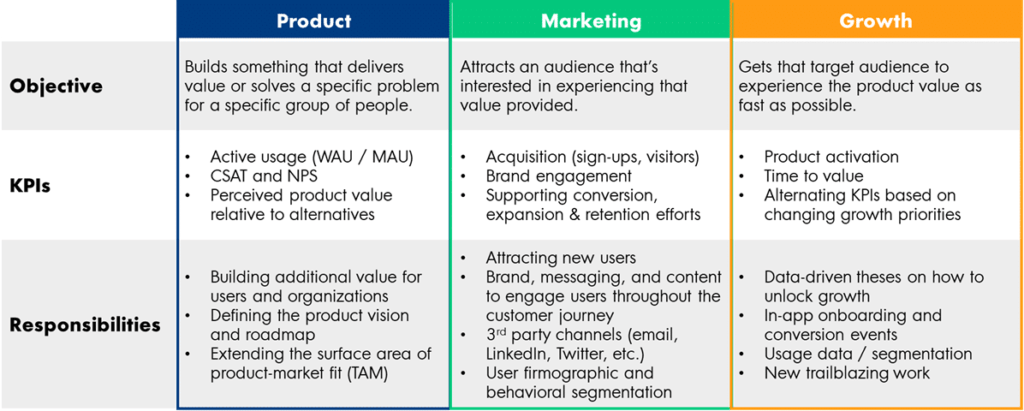
We should stop thinking about what department is responsible for driving growth and recognise that a new function, growth, was born, not to replace marketing or product but to support them with unique and combined skills.
One of my most meaningful learning over the last years is the term growth creates reactions. Whereas many considered marketing the only driver of growth of a business as they are mainly responsible for user acquisition, we have to admit that we unlocked more levers in recent years, for example, the focus on onboarding, personalisation and sharing, which are deeply rooted in the product experience. So, naturally, product management takes care of those parts, connecting the user to the core value propositions.
In addition, funnel feature teams were independently responsible for growth. But we are slowly moving away from a funnel view to leverage the whole product experience to acquire and retain users holistically.
Contents
Missing dots
Working on compounding growth gets more complex. Adding more and more users to a failing product experience does not work. At the same time, it does not create impact and might burn a massive budget to attract the wrong people to a nicely built product.
Over time, a fundamental misalignment grew in how we look at data. While product management relies on specific tools to improve the user experience, they are missing crucial information about where marketing acquired the user. Often, there is a lack of understanding of which channels perform well, what type of user, or what use case a channel can acquire. As a result, product management optimises their funnels without considering user acquisition.
On the other hand, marketing struggles to follow the user deep into the product. What does a user in two weeks do, whom I acquired today? What channel performs best, and how can we improve retention efforts to reduce acquisition costs? Crucial questions to drive the marketing strategy.
The lack of shared data and the resulting different views have technical and organisational reasons. Some tools available for marketing to run and track campaigns have limited compatibility with product analytics solutions. On the other hand, marketing attribution in product analytics plays an important role even though it is not readily available. Ultimately, marketing and product do not speak the same data language.
In addition, the increased specialisation led to an organisational separation of the user’s journey. However, even with new cross-functional measures, the challenge is the gap between marketing and product — the acquisition and the core product experience. As a result, we created a moat that the user has to overcome to experience the core value. Once inside the castle, it is difficult to cross to the outside to acquire new users, ultimately harming growth.
Building bridges
A new specialisation called growth emerged in recent years—powered by like-minded people from marketing and product management to help users jump over the moat. Growth “gets that target audience to experience the product value as fast as possible“.
It connects marketing and the core value proposition by leveraging data based on defined use cases. As described in a previous article, the importance of use cases for the product experience and growth is massive. Creating a shared view of the user and the underlying data helps to guide users from their first touchpoint to a lasting product experience. Furthermore, we can use the product to acquire and grow the user base with increased engagement and value creation.
Growth builds a holistic view of the product and its users to help identify the opportunities with the highest impact. But that’s not all. According to Lauren Schuman, VP Product Growth at Mural, Growth can influence in a broader way how a company moves forward.
“A Growth team should have a clear understanding of the business impact that is indicated by success for the team, usually through a North Star metric. But I do think it’s easy to over-index on moving a metric as success. From my experience, a Growth team really is successful when its value extends beyond the work that team physically does. It’s successful when it expands into influencing things like strategy, marketing, and product decisions across the company.”
Lauren Schuman, VP Product Growth at Mural (OV Build)
Storming becomes Norming
Whenever something new evolves, technology or new team members, we go through different phases. It is about time to accept that a new player has entered the game. We should get out of the storming and enter the norming phase to align better the three different functions of marketing, product and growth.
As a starter, we must accept growth with skills unique to improve user activation and retention. “Growth is a multi-disciplinary and data-driven approach to scaling products“. But, like any function, it cannot survive and strive alone. It needs help and support to show its impact. Organisations are not fluid, and we require clear responsibilities for teams to function well. OpenView created a pretty good overview of marketing, product and growth differences.

Growth is here to stay, not replacing marketing or product but supporting them with unique skills.